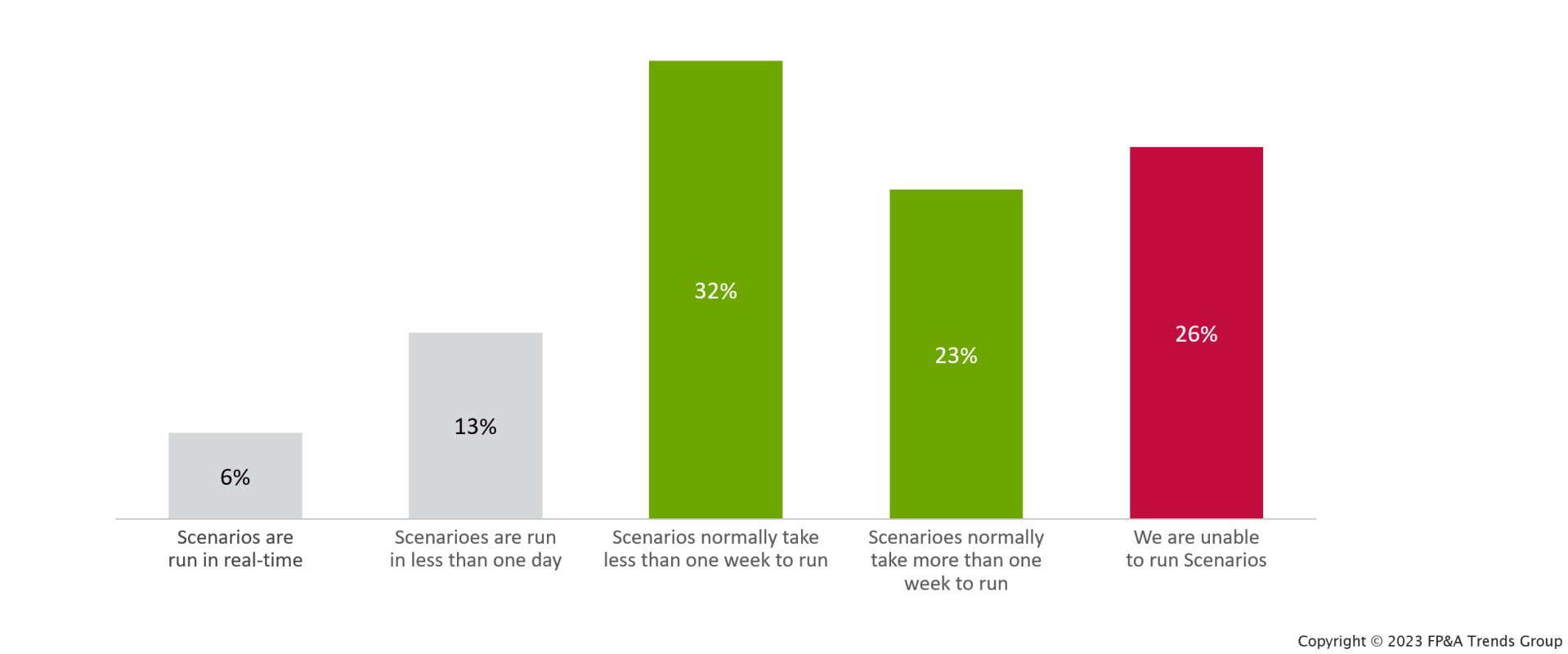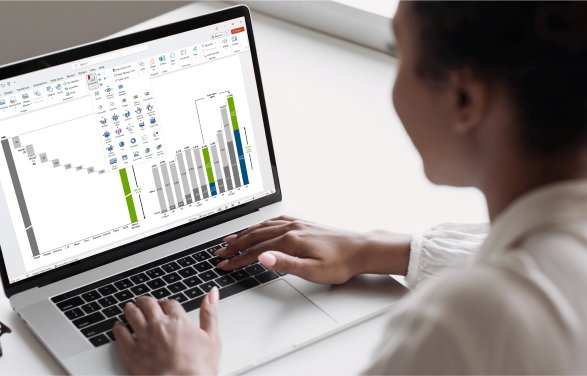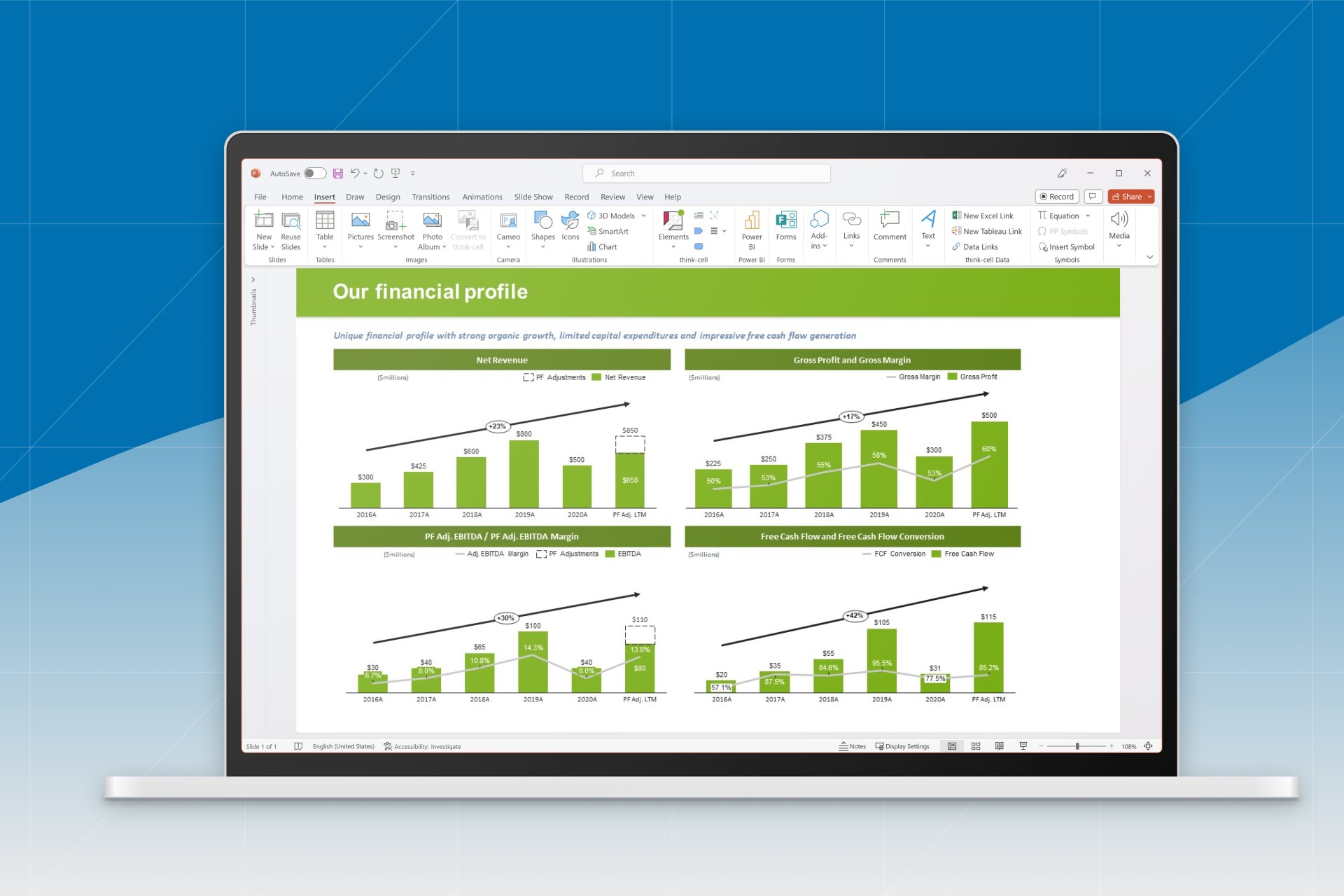Planning for uncertainty with FP&A scenario management
5 min read — by Akash Choudhary
FP&A scenario management is an essential mindset that modern organizations should adopt to plan and make quick, informed decisions in an uncertain environment. However, most companies still struggle with old processes, static models, and outdated technologies. All of that raises a question: how and what can we change?
While the business world is becoming more unpredictable, financial planning & analysis (FP&A) professionals are looking for new tools and techniques for planning and forecasting in a constantly changing environment. For example, not long back in March 2020, when the pandemic hit and the business world was full of "dead budgets" and unrealistic forecasts, scenario planning became a critical technique for the decision-making process.
Challenges with scenario planning
Many organizations are still struggling with scenario planning today. According to the FP&A trends survey 2022, only 6% of the 375 companies surveyed could run scenarios in real-time. Furthermore, only 13% of respondents claimed to be able to run scenarios in less than one day. Surprisingly, over 25% respondents cannot run scenarios at all, and 55% struggle with them for days and weeks. Depending on the business question at hand, scenarios could become useless if they take days to produce.
Evolution from scenario planning to scenario management
Scenario planning has been around for many years. It has been used not only for strategic planning but also for risk management and financial analysis. Practically every traditional budgeting and planning process has often included three "classical scenarios": the best, the worst, and the average. The reality shows that having these basic scenarios is not enough. Indeed, the events of the past years have dictated the requirement for agile and adaptable planning.
John Murphy, CFO of the Coca-Cola Company, once said a phrase about the evolution of scenario planning.
"I have become less and less of a fan of the term ‘scenario planning' (in the last nine months)... I think of it more as scenario management than scenario planning."
Scenario management is not just a process, it is a mindset. In other words, the traditional "one annual plan-four quarterly forecasts" framework does not work anymore. To manage uncertainty, FP&A professionals need to understand multiple potential states of the future and the drivers that create them. They must manage multiple scenarios on demand, collaboratively, analytically, and quickly (practically in real-time).
Modern scenario management framework
To fight these inefficiencies, FP&A professionals should be aware of how they can improve the situation. Most organizations typically have three distinct planning processes:
- Strategic planning – determines future goals of the organization and the strategies to achieve them
- Tactical planning – translates strategic goals into actionable initiatives in the mid-term, typically ranging from 1 to 3 years
- Operational planning – focuses on the day-to-day operations of the organization, usually spanning from weeks to up to a year. It details specific tasks, responsibilities, and timelines to achieve the tactical objectives
The first step in developing the modern scenario management framework is harmonizing the three key planning processes in an organization. In other words, a shift from traditional to integrated FP&A is needed.
How can a scenario management ecosystem be created?
FP&A professionals must ensure the harmonization of all organizational planning and forecasting processes. In practice, it means that if the strategic plan changes due to new environmental factors, the connective adjustments in operational and tactical plans are automatically updated. Therefore, the best-in-class scenario management process is the ultimate goal for any FP&A department. Let's read on.
What is integrated FP&A?
Integrated FP&A is a single and continuous framework where plans and forecasts are horizontally and vertically integrated. It is essential to understand the different layers of planning within an organization and where financial planning fits within these layers. This concept represents the coordinated departmental activities that lead to developing, assessing, and implementing ''the most likely scenarios" to achieve corporate goals. Also, it allows businesses to evaluate and support the impact of multiple futures on demand.
"Six success factors matrix" for integrated FP&A
Now we understand that integrated FP&A is essential for modern scenario management. But how can we implement it in practice? The international FP&A board summarized six factors required for a successful journey towards integrated FP&A, following discussions and research into practical insights from leading organizations.
In order to harmonize planning processes, both vertically and horizontally, professionals need to pay attention to the six aspects outlined below.
1. Identifying key business drivers
Both internal and external. It is important to focus on the most critical ones. For example, companies should focus on 20% of drivers that can explain 80% of the results (according to the pareto principle). Pay attention to the connection between drivers down from the strategic to operational level and up the other way. Understanding the key drivers and how they are connected to different levels of an organization must become an important, regular exercise for any modern FP&A department.
2. Create a fully driver-based FP&A model
Even a simple excel-based, fully driver-based model will significantly impact your ability to run scenarios. Make sure the model connects all three levels of planning. You need to understand how the key business drivers drivers are connected and model them accordingly in order to integrate all your planning and forecasting frameworks within an organization.
3. Any good model should be a "three-way model"
It should connect all three accounting statements: profit & loss (P&L), cash flow, and balance sheet. At first, it sounds simple, but from hundreds of international FP&A board meetings it has been observed that only around 20% of organizations have three-way connected models. The majority still focus on P&L with disconnected cash flow and balance sheet matrixes being used. The connected financial model is a must for the environment of constant change where cash planning is important and capital is limited.
4. Integrate your essential planning processes
Re-think who does what. The planning process should not be overcrowded, nor should it be too centralized. As a business partner, the FP&A professional knows all the essential information flows for planning and forecasting. It is vital to streamline your processes, models, and workflows to the essential activities. Traditionally, some organizations continue to plan down to the general ledger level and/or to every cost center. Remember to review the process to simplify and shorten it, automating repeatable tasks, and removing unnecessary ones.
5. Factor in people's considerations
As any planning is a group exercise, review the team involved. Important considerations are:
- Do we have enough skilled people and are there any knowledge and experience gaps?
- Do the non-financial people involved understand the whole process?
- Does everyone involved knows the process, drivers and the underlying model?
6. Modern FP&A technology
Technology is an important asset for any organization that wants to plan for uncertainty. However, it is placed at the end because it would enhance the process even more if all the above five factors are well-taken care of. If modern technology is implemented with the static model and not integrated processes, the system will only enhance the inefficiencies within your FP&A team.
Read more:
The meaning of data storytelling in the FP&A world
In this blog, we will explore the essential components, and the practical steps involved in creating compelling data-driven business stories.
— by Akash ChoudharyAugust 01, 2023 | 5 min read
How to develop Financial Planning & Analysis dashboards
This article explores how Financial Planning & Analysis (FP&A) professionals can design informative and insightful dashboards, geared optimally for their target audiences.
— by Akash ChoudharySeptember 12, 2023 | 5 min read




